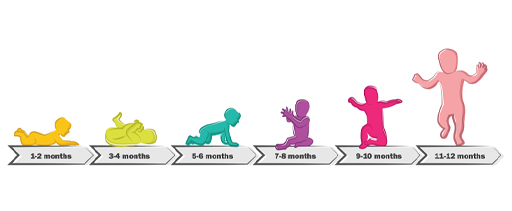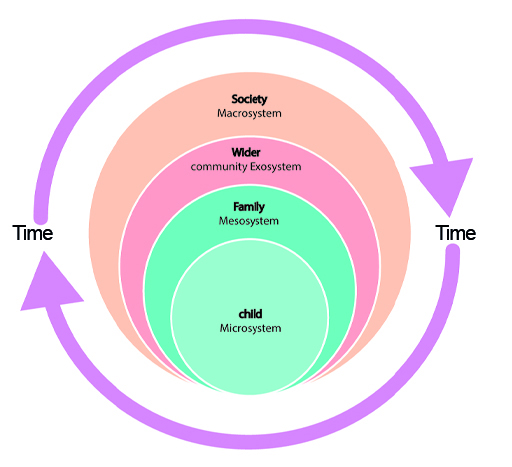2 Understanding children’s development
Think of a newborn baby. Imagine how small they are and how they rely on the adults around them for their physical and emotional needs to be met. Now fast forward to a baby’s first birthday. Most will have tripled their birth weight, might be walking, able to communicate a range of their needs and will have developed their own personality. This first year of life is, for most children, a time of rapid growth and development.
The term ‘child development’ is used to describe the expected changes that occur from birth and throughout childhood; the areas of development are described as physical, intellectual, language, emotional and social. The areas of development have been traditionally separated out in order to make the study of children and their development easier; however, realistically, the different areas overlap with each other. And the way that a child develops in each area can impact on their sense of wellbeing and, in turn, can influence whether their mental health is seen as ‘good’ or ‘bad’.
Although the study of children and their development has identified a range of skills, growth, maturation or learning that a child is expected to have achieved by a certain age, it is not necessarily the case that each child will develop in the ways that psychological theories have outlined. There are many influences on children’s development and, returning to the diagram you first saw in Session 1, the level of development will depend on the systems and resources around the child.
If a child is lacking the factors that make a positive contribution to their development, this can mean that a child may not meet the expected norms of development. On the other hand, if children have access to many of the positive influences on development, some children will exceed the expected norms. However, despite the systems around them and the resources available to them, some children can still experience compromised mental health.
Gaining an understanding of how children develop is important because it helps adults to understand the expected behaviours and abilities for a child at a certain age. For example, an eight-month-old baby is likely to feel very anxious about the prospect of being separated from their main carer or attachment figure and they are likely to show their distress by becoming clingy and crying. As children grow and develop, they will learn that their main carer will return, so even if they are not completely happy about being separated they can be reassured more quickly and easily when separated.
There is a great deal that adults can and should do to prepare children for transitions between home and care and education settings; you will focus on this in Session 5. If, despite careful preparation and attention to the child’s needs, a child exhibits behaviour that is not typical for their stage of development, this may be an indication that something is amiss.
Understanding the expected norms of development can be helpful, but it is also important to understand that each child is unique and will develop in their own way and in their own time. However, knowing the child’s ‘unique ways’, their general behaviour, development and preferences is helpful so that any concerning changes that last for an extended period can be identified and addressed.


